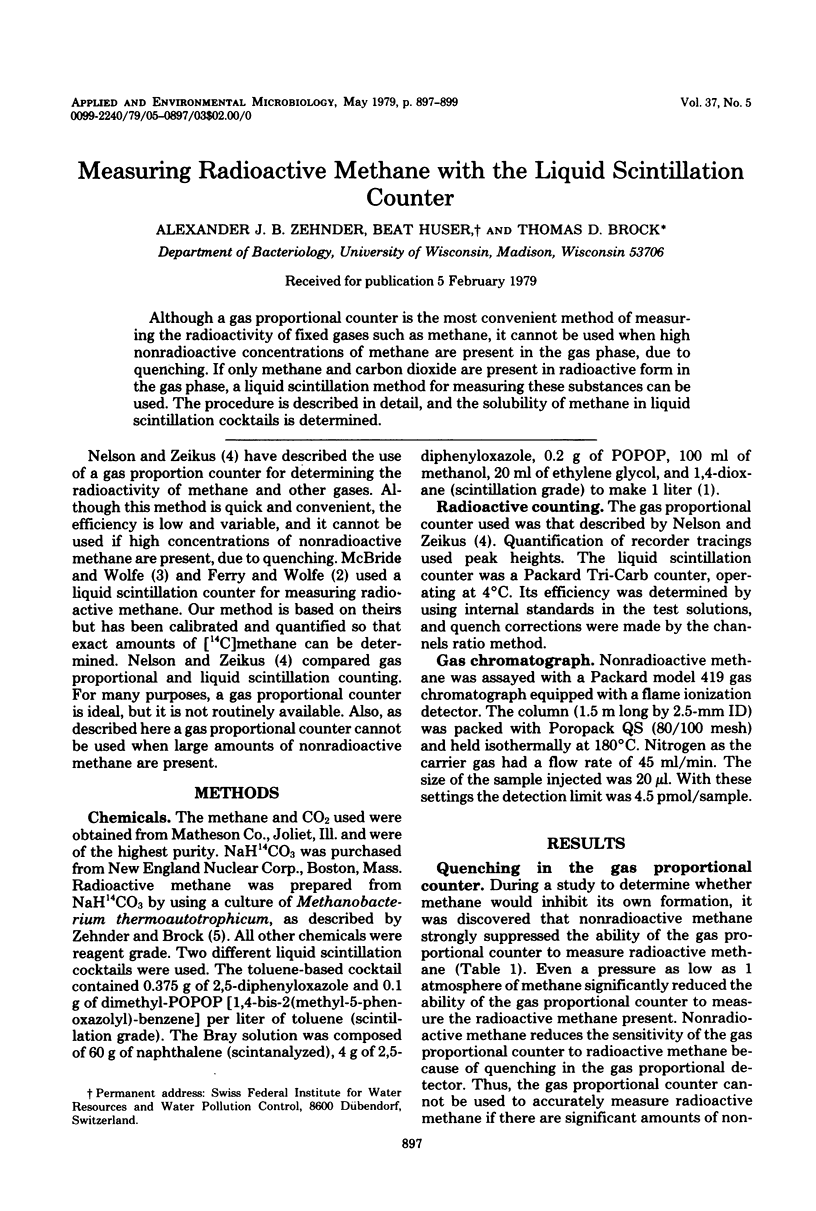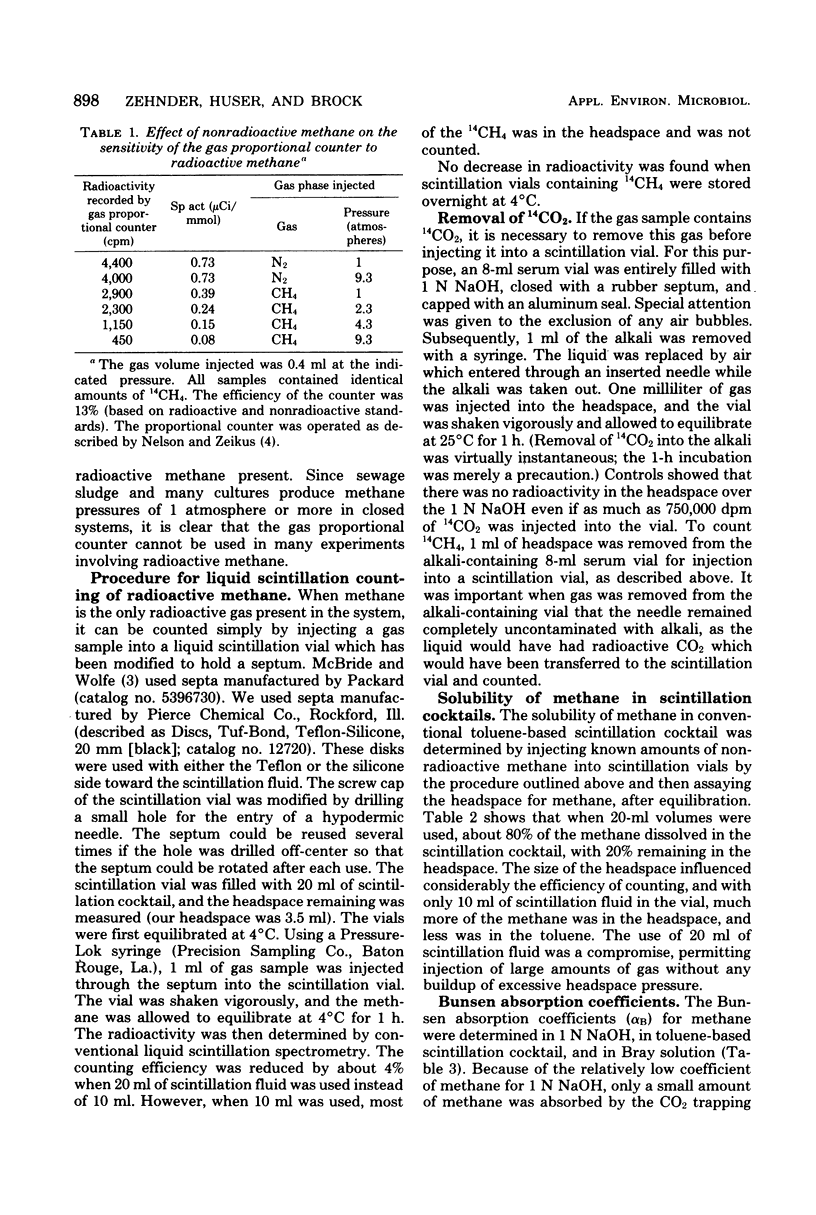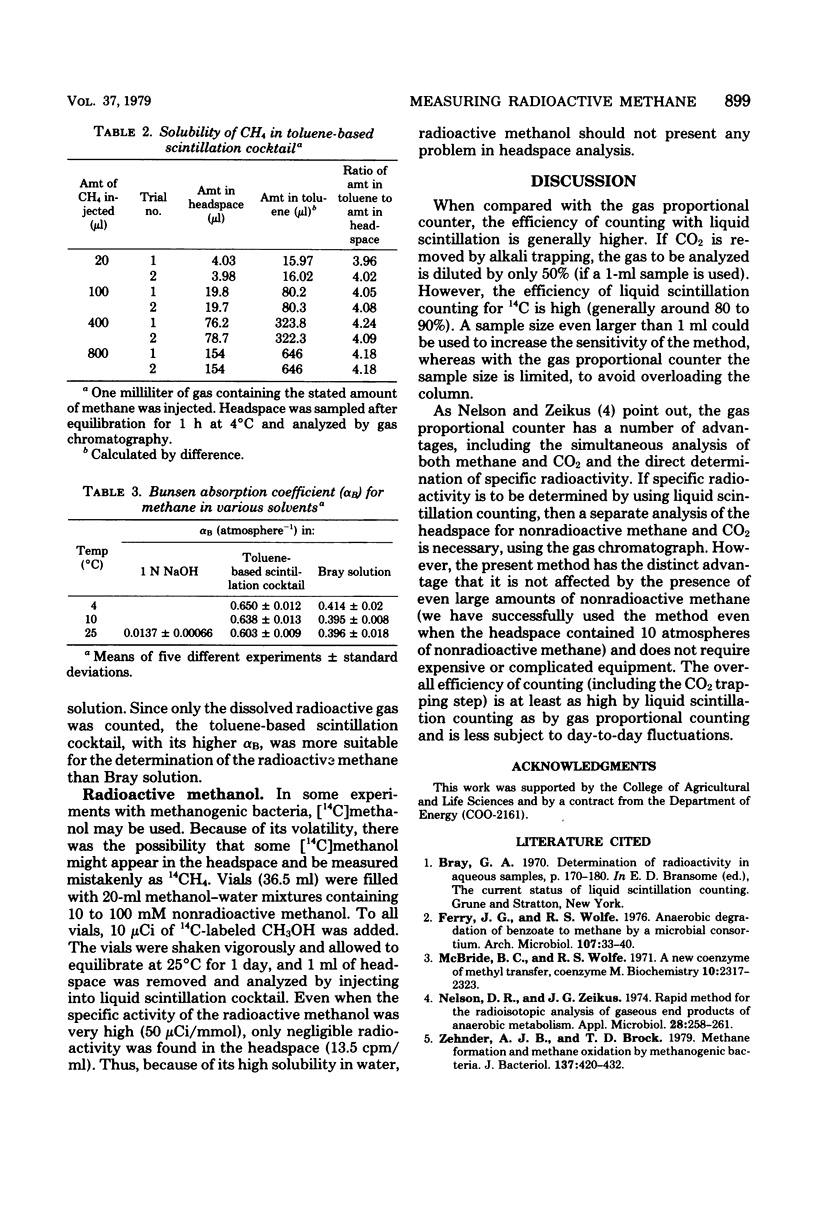Abstract
Although a gas proportional counter is the most convenient method of measuring the radioactivity of fixed gases such as methane, it cannot be used when high nonradioactive concentrations of methane are present in the gas phase, due to quenching. If only methane and carbon dioxide are present in radioactive form in the gas phase, a liquid scintillation method for measuring these substances can be used. The procedure is described in detail, and the solubility of methane in liquid scintillation cocktails is determined.
Full text
PDF


Selected References
These references are in PubMed. This may not be the complete list of references from this article.
- Ferry J. G., Wolfe R. S. Anaerobic degradation of benzoate to methane by a microbial consortium. Arch Microbiol. 1976 Feb;107(1):33–40. doi: 10.1007/BF00427864. [DOI] [PubMed] [Google Scholar]
- McBride B. C., Wolfe R. S. A new coenzyme of methyl transfer, coenzyme M. Biochemistry. 1971 Jun 8;10(12):2317–2324. doi: 10.1021/bi00788a022. [DOI] [PubMed] [Google Scholar]
- Nelson D. R., Zeikus J. G. Rapid method for the radioisotopic analysis of gaseous end products of anaerobic metabolism. Appl Microbiol. 1974 Aug;28(2):258–261. doi: 10.1128/am.28.2.258-261.1974. [DOI] [PMC free article] [PubMed] [Google Scholar]
- Zehnder A. J., Brock T. D. Methane formation and methane oxidation by methanogenic bacteria. J Bacteriol. 1979 Jan;137(1):420–432. doi: 10.1128/jb.137.1.420-432.1979. [DOI] [PMC free article] [PubMed] [Google Scholar]


